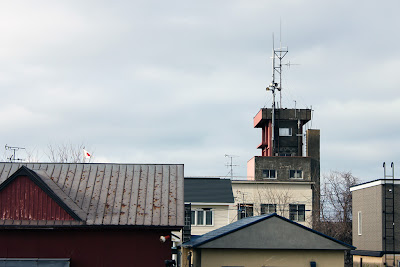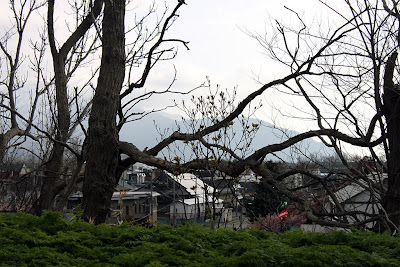Hokkaido, lovingly known as "Alaska: the test run"
History Story Time Lecture with Tim-Sensei
So, As I understand it, Hokkaido, as a land mass, wasn't really of interest to the Japanese government until the Meiji Restoration (late 1800's) which makes a majority of the development there much younger than that of the US (which is already considered a young country by global standards).
Hokkaido (aka, the snow baby of Japan)
This western vibe I've been feeling isn't just the result of my "foreigner's ignorance" - you know, like I was expecting geisha's, going to work in a temple, giant robots, all that good stuff:
this is literally what I was expecting.
Around 1870, the Japanese government got serious about Hokkaido due to an increasing threat from Russia, which was expanding - claiming various islands in the East Asian part of the world. To assist in the effort of making Hokkaido a contributing, functional member of the Japanese archipelago, Japan brought over Horace Capron, the Commissioner of Agriculture under President Ulysses S. Grant. He introduced western techniques for utilizing the land: mining, farming, etc.
A few years later, Capron left and was superseded in a way by William S. Clark, who established the Sapporo Agricultural College, which is now known as the University of Hokkaido. His teachings on agriculture and Christianity were rather successful in Japan, which is evident throughout Hokkaido in the form of statues and placards with his famous quote, "Boys, be ambitious!"
I didn't have time to photoshop the heck outta this guy...
During and following this period of American influence, the population of Hokkaido grew by over 400%. So I think that explains why Hokkaido looks more like this than the image above:
(citing my sources: thanks wikipedia)
But all joking aside, I love Mashike. This western vibe has made the transition from the US to Japan incredibly easy in ways I never would have believed prior to my departure.
So the reason I brought all this up was so I can really demonstrate how surprised I was to find little spots around Mashike that really exude a more traditional or conventional Japanese aesthetic (again, this is from a foreigner's perspective - I'm not claiming to make definitive judgements on what's Japanese and what isn't).
Anyway, here are some new shots. Some of the photos near the end of the post are the ones I thought were considerably more "Japanese" than the general view around Mashike.
Little signs that spring is slowly approaching
Muh pants don't fit
More fruit signs.
I know there's a proper name for these little fellas, but it's completely escaped me...
Offerings to the little fellas
The loneliest vending machine in all of Japan. I've heard of vending machines out in the middle of nowhere, but this one isn't even lined up with the road. It's just placed randomly at an angle, in the middle of a gravel lot...
farm house nearby.
one of the schools I teach at - it's one of the oldest timber buildings in Japan... or something like that.
local rooftops
temple grounds...
The only cherry blossoms I could find in all of Mashike
This spot struck me as incredibly "Japanese" looking - very reminiscent of the area I stayed when I visited Mobara, Chiba, which is an hour or two outside of Tokyo.
Last pic for now!


























excellent! loved it
ReplyDeletelove to know more of the american influences,an on the ainu? '